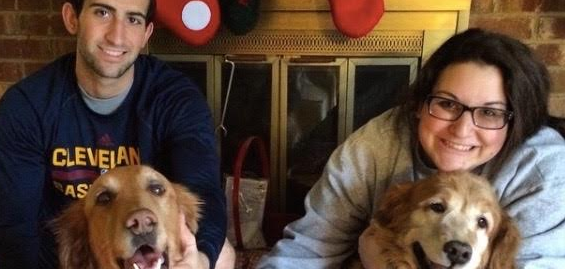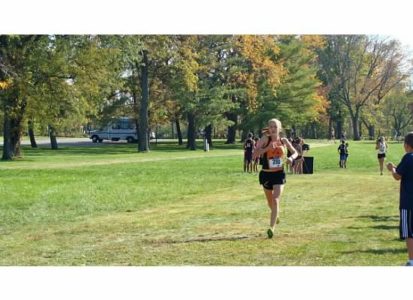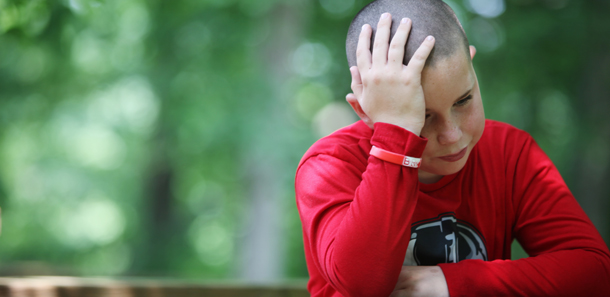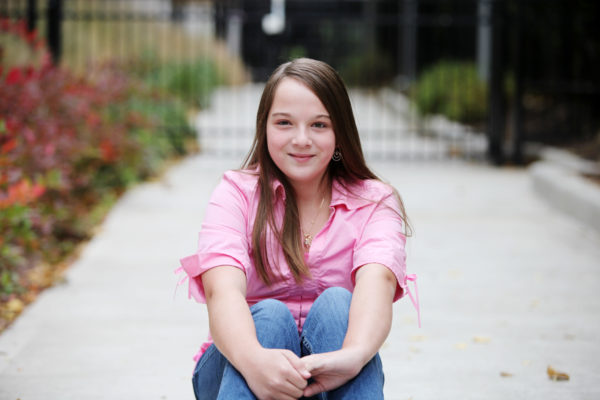I get a little emotional when I think about the amount of pain my daughter was experiencing before she attended the Functional Independence Restoration Program, which is an intensive, inpatient rehabilitative program for kids with chronic pain and disability.
Before this program at Cincinnati Children’s, Olivia couldn’t wear socks, shoes, pants, or long sleeves. The sensation was too much for her nerves to tolerate. She was 8 years old at the time, and suffering from complex regional pain syndrome (CRPS), a condition in which the nervous system sends constant signals of pain to the brain and is often triggered by a traumatic event.
Those were the very visual signs of my daughter’s distress. On the inside she was suffering from the pain I couldn’t see. To be honest, the word ‘suffering’ doesn’t begin to describe the state my daughter was in. She couldn’t be around a vibration of any kind – from a car ride, a motorcycle passing our house, or even the washing machine and vacuum cleaner.
When she experienced a vibration, it felt like fireworks pulsating through her nerves. It was an intense type of pain that would cause her to cry, scream and writhe in pain. Sometimes it would be so intolerable that she would hyperventilate and vomit.
Because of CRPS, she had to quit playing sports and attending school. The condition was causing her to become isolated and it was difficult for her to maintain her friendships. A tough situation for an 8-year-old to experience and a heartbreaking thing for a mother to witness.
But she hadn’t always been in a constant state of pain. She was a typical 8-year-old girl who liked hanging out with her friends, riding her bike, and playing soccer and tennis. In August 2011, she fell off her bike and fractured her growth plate in her left leg. We went through all of the typical steps when this happens – emergency visit, X-rays, and eventually orthopedics.
But what wasn’t typical about the situation was her level of pain. She would cry and scream for eight hours a day. Dr. Tamai, her orthopedic surgeon, thought the location of the cast might be causing her pain, so he put her in a longer one. When that didn’t solve the problem, he investigated further. Eventually he diagnosed her with CRPS.
Olivia then went through a series of desensitizing treatments to reset and shock the nerves. It helped a little bit, but didn’t get her pain level back to where it needed to be.
The next couple of years were marked with more injuries and other treatment approaches. She had an infraclavicular nerve block, occupational/physical therapy, psychology, and holistic therapy appointments. She had ups and downs; she would feel better, then sustain another injury and feel worse again. Her pain level would improve but she still wasn’t where she needed to be.
When we learned of the Functional Independence Restoration program, we couldn’t sign up fast enough. I was apprehensive that it would work, but was willing to try just about anything to find her relief. I’ll never forget the day she was admitted. She started in January 2014 on her 11th birthday – which was during a snowstorm with subzero temperatures. She was in so much pain at the time that despite the weather, she hobbled in on crutches wearing a skirt and no socks and shoes.
Within two days of starting the inpatient program, she was walking without crutches and had a sock sleeve on her arm and leg. This is significant because previously the feeling of clothing on her arm and leg – where she had sustained injuries – created an unbearable sensation. The fact that she was able to tolerate anything on her arm and leg was nothing short of a miracle, in my opinion. And seeing her walking around without crutches was liberating.
It had been close to three years since she had been able to do these types of things. I was overcome with all sorts of emotions witnessing it all – elation, shock, and caution. I was so ecstatic to see the great strides she had made, but I was wondering how I was going to be able to implement all of these therapies at home.
Her two weeks were filled with psychology, pain management, occupational and physical therapy, orthopedics and other specialists appointments. Her psychologist, Dr. Sarah Williams, made a dramatic impact on her. She has the most calming demeanor and helped Olivia to overcome the mental aspects of her pain. Dr. Williams gave her strategies to keep the pain from winning, such as positive self-talk phrases like, “The pain doesn’t control me. I am in control.”
Toward the end of the two weeks, I was beginning to feel more comfortable with managing it all. I knew that this was just the beginning of her journey to feel better, but when I saw how well she was progressing, I knew it was all worth it.
She walked (without crutches!) out of the program with a new sense of hope, wearing everything you’d expect to see a kid wear in the middle of winter – socks, shoes, pants, and long sleeves.
When we got home, the first thing she wanted to do was try on a pair of skinny jeans. A feat that I couldn’t have even imagined her attempting two weeks prior. We both laughed and cried at the same time. It was such a simple thing, but very symbolic of how far she had come.
I know that she is not 100% cured, but the program has given her the strategies she needs to cope with the mental aspects of her pain. She is such a fighter and now refuses to let the pain prevail. Without the psychological aspects of her discomfort, we are able to have a new focus. We are now concentrating our efforts on overcoming her physical setbacks from the injuries – strength and longevity.
The pain still comes back from time to time, but she knows how to send it packing.






It has got to be devasting to a child to be in that much pain .. I am old but I have been in pain for a long ,long time with pain that will not go away Neuropthy. It has changed my life .. I hardly get out of my home because of this pain I have all the time .. I take so much meds . It don’t help very much .. . It is sad to say . I can’t imagine a child hurting like that and has got to go through life like that ..hope she gets through this and never have it again ..